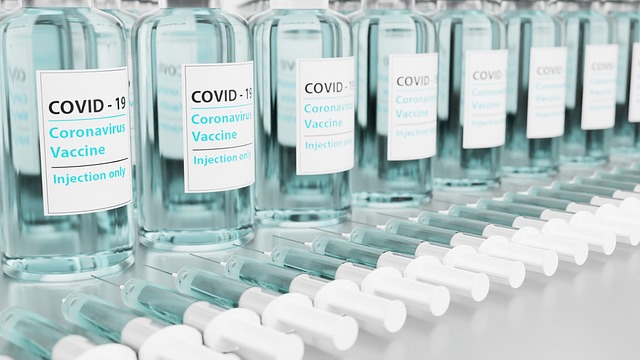This scientific report has been updated to reflect current knowledge about SARS-CoV-2 transmission and has been reformatted to be more concise.
The modes of transmission of SARS-CoV-2 are now classified as inhalation of viruses, deposition of viruses on exposed mucous membranes, and touching mucous membranes with dirty hands contaminated with viruses.
Although the way we understand transmission occurs has changed, the ways to prevent infection with this virus have not. All prevention measures recommended by the CDC remain effective for these forms of transmission.
SARS-CoV-2 is transmitted through exposure to infectious respiratory fluids.
The primary way people become infected with SARS-CoV-2 (the virus that causes COVID-19) is through exposure to respiratory fluids that carry infectious viruses. Exposure occurs in three main ways:
- Inhalation of very fine respiratory droplets and aerosol particles.
- Deposition of respiratory droplets and particles on exposed mucous membranes in the mouth, nose, or eyes from direct splashes and aerosols.
- Touching mucous membranes with hands that have become soiled directly with virus-containing respiratory fluids or indirectly by touching virus-containing surfaces.
People release respiratory fluids during exhalation (e.g., quiet breathing, talking, singing, exercising, coughing, sneezing) as droplets in a spectrum of sizes. 1-9 These droplets carry viruses and transmit infections.
- Larger droplets settle in the air quickly, in seconds to minutes.
- The smallest very fine droplets and aerosol particles that form when these fine droplets dry quickly are small enough to remain suspended in the air for minutes or hours.
Infectious exposures to respiratory fluids carrying SARS-CoV-2 occur in three main ways (not mutually exclusive):
- Inhalation of air with very small fine droplets and aerosol particles containing infectious viruses. The risk of transmission is greatest within three to six feet of an infectious source where the concentration of these very fine particles and droplets is highest.
- Deposition of viruses carried in droplets and exhaled particles onto exposed mucous membranes (i.e., “splashes and aerosols,” such as from coughing). Likewise, the risk of transmission is greater near an infectious source where the concentration of these droplets and exhaled particles is higher.
- Touching mucous membranes with hands soiled by exhaled respiratory fluids containing viruses or by touching inanimate surfaces contaminated with viruses.
The risk of SARS-CoV-2 infection varies depending on the amount of virus a person is exposed to.
Once infectious droplets and particles are exhaled, they move away from the source. The risk of infection decreases with increasing distance from the source and with increasing time after exhalation.
Two main processes determine the amount of virus a person is exposed to in the air or by touching a virus-contaminated surface:
- Decreased concentration of viruses in the air as larger, heavier virus-containing respiratory droplets fall to the ground or other surfaces under the force of gravity and the very fine droplets and aerosol particles that remain in the airstream Air progressively mixes and dilutes within the increasing volume and air currents they encounter. This mixture is not necessarily uniform and can be influenced by thermal layers and initial bursts of exhalations.
- Progressive loss of viral viability and infectivity over time influenced by environmental factors such as temperature, humidity, and ultraviolet radiation (e.g., sunlight).
Transmission of SARS-CoV-2 can occur by inhalation of the virus in the air more than 2 meters from an infectious source.
As the distance from the source increases, the role of inhalation also increases. Although inhalation infections at distances greater than two meters from an infectious source are less likely than at closer distances, the phenomenon has been repeatedly documented under certain preventable circumstances.
These transmission events have involved the presence of an infectious person exhaling the virus indoors for a prolonged time (more than 15 minutes and in some cases hours), leading to airspace virus concentrations sufficient to transmit infections. to people more than 2 meters away and, in some cases, to people who have passed through that space shortly after the infectious person.
According to published reports, factors that increase the risk of SARS-CoV-2 infection in these circumstances include:
- Enclosed spaces with inadequate ventilation or air handling within which the concentration of exhaled respiratory fluids, especially very fine droplets and aerosol particles, may accumulate in the air space.
- Increased exhalation of respiratory fluids if the infectious person exerts physical effort or raises their voice (for example, exercising, shouting, singing).
- Prolonged exposure to these conditions, usually more than 15 minutes.
Preventing the transmission of COVID-19
The infectious dose of SARS-CoV-2 necessary to transmit infection has not been established. Current evidence strongly suggests that transmission from contaminated surfaces does not substantially contribute to new infections.
Although animal studies and epidemiological investigations (in addition to those described above) indicate that inhalation of viruses can cause infection, the relative contributions of inhalation of viruses and virus deposition on mucous membranes remain unquantified and will be difficult to quantify. establish.
Despite these knowledge gaps, available evidence continues to demonstrate that existing recommendations to prevent SARS-CoV-2 transmission remain effective. These include physical distancing, communal use of well-fitting masks (e.g., barrier face coverings, surgical/procedure masks), adequate ventilation, and avoiding crowded indoor spaces.
These methods will reduce transmission both by inhalation of viruses and by deposition of viruses on exposed mucous membranes. Transmission through dirty hands and surfaces can be prevented by practicing good hand hygiene and cleaning the environment.
















